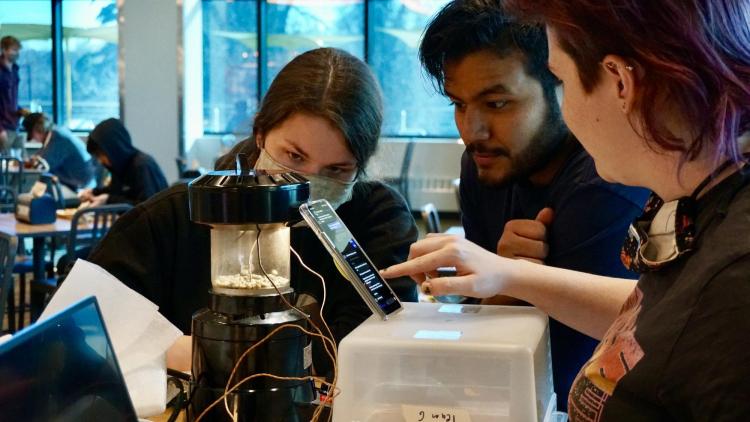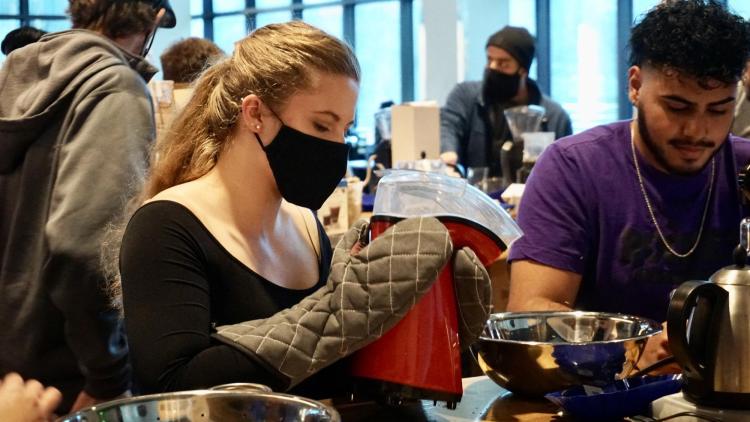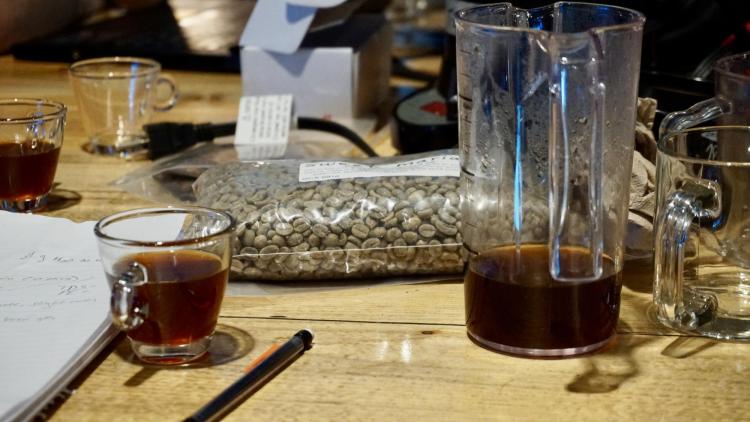ME Course Column: Design of Coffee
This is the first article in the ME Course Column series, a recurring publication about the unique classes and labs that mechanical engineers can take while at the University of Colorado Boulder. Follow the series to understand the core curriculum, discover elective course options and learn the broad applications of mechanical engineering skills.
For some mechanical engineering students, coffee is what gets them through those long nights of studying. It can become a necessity for a good day. Have you seen how long the line can get at Gravity Café in the Engineering Center? Enough said.
Those with a love for coffee can find their place in MCEN 4228/5228: Design of Coffee. Taught by Carmen Pacheco-Borden, the course shows junior, senior and graduate-level students how to use their training to solve problems outside the traditional engineering field by roasting and brewing coffee.
“I always tell students you should really like coffee to join this class,” Pacheco-Borden said. “It is a popular course, and it is not an easy one, so I want to have students who really do have a passion for coffee.”
Each week begins with an instructor-led discussion about a different engineering principle, with a focus on how that principle is manifested in the production of coffee. Students learn about the global sourcing of coffee beans, examine farming practices and study the science behind making a cup of coffee from bean to cup.
Elijah Miller, a graduate student taking the class, explained that they have learned where various coffee beans have come from, how the beans differ country to country and the different ways coffee beans are processed.
“There is the washing method or the drying method,” Eli said. “Coffee beans are actually picked with a red fruit around them. The washed method uses water to wash the fruit off the bean before drying, while the dry method allows the bean to dry while inside the fruit until it becomes a raisin. Then you pull the bean out. Each method will deliver a different taste.”
The class is followed by a lab later in the week where students perform experiments in the Williams Village Teaching Kitchen. They are tasked with designing efficient ways to make a good cup of joe. They use principles such as heat transfer, mass transfer, thermodynamics, materials science, sustainability, water quality, biomedical engineering and device design evaluation before giving their coffee a sip.

Graduate students Demi Dayton, Osmar Aguirre and Bex Mikofsky track watts used while roasting.
The course culminates in a competition where student teams design the best tasting coffee using the least amount of energy. They need to choose which coffee beans they want to start with based on what they learned in class – which country of origin and which processing method, for example. Then, the students move on to finding efficient ways to roast and brew.
Nearing the end of the fall 2021 semester, the teams have started their design and taste trials.
“We are basically tracking the energy parameters so that we can duplicate the coffee we make,” said graduate student Bex Mikofsky while roasting her team’s beans. “We use watt monitors to track and graph how much energy is being used during each roast. We want to keep the energy usage as low as we can.”
Mikofsky and her teammates, graduate students Osmar Aguirre and Demi Dayton, were testing a machine coffee bean roaster. Other teams were using popcorn makers during the trial, which is an effective way to roast beans.
Senior Jose Soto explained that they first tried using the coffee bean roaster before moving to the popcorn maker. He and his team, fellow undergraduates Ashley Atkins and Cordelia Kim, found the popcorn maker used less energy, but as they drank their coffee, the team discovered that it did not taste as good.
The way the team brewed their coffee could be a factor as well. Each team has multiple brewing options, including the use of a French press, a dripper or an AeroPress. Each one will result in a different flavor or potency.
Design choices are key in this competition. The final blind taste panel to choose the best cup is on Wednesday, Dec. 8.

Ashley Atkins and Jose Soto roast coffee beans with a popcorn maker.
Students were able to get some inspiration from OZO Coffee Company in Boulder. The class toured the company’s roastery to observe the roasters and to cup their own coffee.
“I want to recognize OZO Coffee Company for allowing our students to tour their amazing roastery and for giving the hands-on workshops,” said Pacheco-Borden. “I think this is an experience that students really appreciated and would like to see more of in the future.
Design of Coffee is offered in the fall semesters. In spring 2022, Carmen Pacheco-Borden will be teaching MCEN 4228/5228: Food Engineering. The course focuses on fundamental engineering principles and quantitative analyses of techniques used to process commercial foods and beverages. Students learn innovative and sustainable ways to improve food quality while reducing energy, water and other inputs in food processing. The course will feature entrepreneur guest lectures and industry tour visits both on and off campus.


